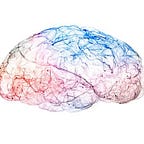Clinical Innovation during a pandemic
As the scale of the coronavirus pandemic grew, so did the amount of uncertainty. This virus upended life. Although uncertainty is the norm in areas such as business forecasting and stock price valuations, we feel uneasy when grappling with tough questions, such as whether to cancel elective surgeries that are not immediately life-threatening, change the triage procedure in the ED, share healthcare data across platforms and how to safely share data with hospital remote workers. Healthcare workers, engineers, and researchers had to draw the line for what is critical, urgent, or non-urgent healthcare. Many questions remain unanswered.
This crisis presented value-maximizing opportunities for innovation in the delivery of healthcare, with particular segments presenting more opportunities for value creation. These include: telehealth, remote monitoring, multi-directional medical devices, data estates, screening devices, care teams etc. Perhaps the biggest example of change associated with coronavirus is the telehealth-related concerns regarding insurance resistance, billing complexities, and privacy evaporated.
This period of turbulence and fear is a learning experience for students, industry, engineers, clinicians, researchers, and patients. It promoted collaboration and creative thinking that spurred changes in behavior. These new behavior changes created value for all stakeholders. All of our behavior changed.
I would like to share 10 changes that I believe may permanently impact healthcare going forward. (1) technology-aided replacement of in-person services with virtual ones, (2) a greater shift in surgeries from hospitals to surgery centers, (3) increased pressure to be cost-conscious and to follow evidence-based medicine guidelines (4) home-based physical therapy surrogates through digital tools facilitated recovery for patients, increased compliance, and ultimately optimized costs and outcomes (5) wearable devices that interface with new computer monitoring programs to allow careful management of therapy (6) hospitals adopted more cost-conscious and effective practices. Identifying practices required the use of sophisticated clinical and operational analytics and advanced cost measurement methodologies (7) the pandemic serves as a crash course for clinicians and patients alike in the value of care, acute care, home care. While not yet widely available outside of the hospital setting, sensors for a multitude of physiologic variables with remote monitoring capabilities have been developed. The necessity of using alternative care settings due to hospital bed limitations leads to innovations that make hospital-at-home care an option for patients (except those who are critically ill and require intensive care). (8) Medical students have been removed from clinical rotations. The clinical responsibilities and educational opportunities of residents have been altered. The whole fabric of medical education has been ripped apart. This turmoil led to widespread innovation, albeit not as visible to the public. As with telemedicine, web-based education increased and new educational programs will now have a global impact. (9) Care models changed, Hospitals revised their ICU care teams. The hierarchy changed. In many hospitals, the traditional ICU attending role changed, they now had critical care capabilities (10) We saw increased use of alternative imaging modalities, such as ultrasound, providing real-time information to various ED, ICU, and nursing clinical teams. Dedicated clinicians rounded with the teams provided updates to families via phone or a video connection.
Also, Federal relaxation of telehealth regulations allowed for novel clinical use cases. Rapid deployment of both technology and clinicians and innovative care models were critical to success!
For me, what makes the difference, is the key elements of our success changed. Our success metrics changed. Now we maintain a high degree of flexibility, sharing best practices, and rapidly deploying teams across our academic and healthcare enterprise. Covid has taught many of us the importance of building a dynamic surge and staffing model, the benefit of offloading tasks from new care teams, and the need to use technology to extend our clinicians and engineers. However, the last lesson learned is that timing and communication is important.
